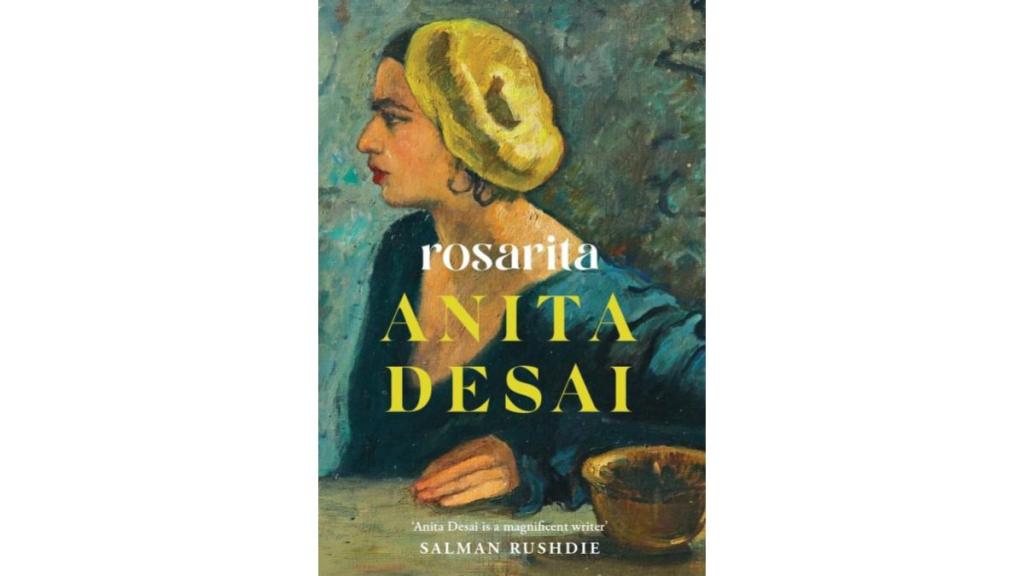By Kartik Chauhan
Published after more than a decade since her last novel, three times Booker-shortlisted Anita Desai’s latest is a timeless reminder of its creator’s unseconded ability with words. In Anita Desai’s Rosarita, a curious inanimate protagonist registers its resounding presence throughout the narrative: Gaze. Our ability to see each other, not only physically but also emotionally makes us real to each other; the novel impresses this ageless truth. But simultaneously, this gaze can have oppressive effects. To be seen for who we truly are — or alternatively for our facades to be revealed — can have dire consequences.
Bonita, an Indian student in San Miguel, Mexico, sits on a bench in a park. She has travelled to an unknown country to learn Spanish, but also to escape her own circumstances at home. Within the first scene, Desai also introduces the idea of gaze — public and of the self — as Bonita’s solitude is punctured by an effervescent, older Mexican woman, who claims a familiar connection with her. Bonita is a splitting image of her mother Rosarita, the stranger claims — “her looks, her manner… her comportment.” But “the floodlight focus of (the stranger’s) enormous, theatrically outlined eyes, (and her) ferocious attention,” have a debilitating effect on Bonita. “It is making you uneasy to be the focus of such unembarrassed attention, acting like insects on your skin, exploring…” the second-person narrator comments, overseeing the terse action of the novel.
At first, there is utter disbelief, since Bonita thinks that her mother had never visited Mexico in her lifetime, but when she is unable to bridge the gaps of her mother’s long absence from her childhood, she takes the woman’s version of the past as an opportunity to discover herself through uncovering her mother’s sojourns in Mexico. Bonita painstakingly wonders, “Could she, like a wizard or a magician, bring your mother to life again even if it is a life you never knew or suspected?” Time repeats itself in haunting sameness, as Bonita embarks on her mother’s trails in a foreign land, guided by this stranger who represents her last chance to connect with her own life, which she seems to be running away from. As Desai writes about Bonita from a second-person perspective, the narrative has an incredibly hypnotic effect. Even as we witness Bonita being deeply troubled by the public gaze on her and also her own self-conscious gaze at herself, Desai’s choice of narrative style pins her protagonist to the wall — noticeably against her wishes as Bonita often registers her discomfort at being seen and treated with warmth by the strangers she encounters during her travels. “The place, the occasion are all as friendly and unthreatening as you could wish, but you find yourself barely able to appreciate it.” We are always looking into Bonita’s life, often intrusively. By making her self-consciousness and discomfort so tangible, the novel also points out to us how the act of reading itself is an intrusion, and how it is often reductive, in the way that we read each other in our everyday lives too—informed by our biases and prompt judgments.
Notably, the narrative voice changes to a third-person style once in the novel when Desai writes about Rosarita’s perspective. But the more this segment seemingly reveals about her troubled marriage to her strict husband and how that relationship consumed her, the more it obscures too. Desai is at her finest in describing these tense interrelationships, straddling the fragile bridge between clarity and ambiguity in a stunning display of her unmatched understanding of human (dis)connections. After grappling with her denials about the purported history of her mother’s life in Mexico, Bonita visits the town where her mother studied art and painting. Desai’s prose is unparalleled when she describes the changing scenes outside as Bonita travels to the suburbs and then the town itself: “The distant horizon hills appear like the incoming waves of a prehistoric sea, changing in colour from grey to blue and back to grey, their folds closed about their secrets…”
Bonita must confront herself in this journey, to come closer to a semblance of truth about herself, “an admission of her own history, that suppressed one so carefully guarded…” It is no revelation to realise how we are so deftly shaped by the places and people from our childhood—in ways that continue to define our entire lives and choices.
Rosarita endorses this realisation even further. For all its emphasis on sight, however, the novel is about obscurity. In Bonita, we see the emotionally drained modern life, torn between the paradoxical need for solitude as well as companionship. This is, in effect, a blistering novel about our times and for our times. There is only so much we can run away from, Desai suggests, a confrontation with our hidden parts eventually forces itself on us, whether we wish it or not.
The author is a Delhi-based literary reviewer.
Rosarita
Anita Desai
Picador India
Rs. 499; 112 pp
Disclaimer: Views expressed are personal and do not reflect the official position or policy of Financial Express Online. Reproducing this content without permission is prohibited.









